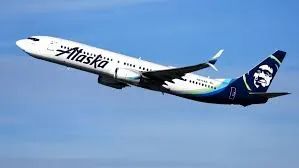
In the complex landscape of aviation, incidents like the recent grounding of Alaska Airlines’ Boeing 737 Max 9 planes shed light on the importance of managing third-party risks.
Here’s a breakdown of the events and the broader implications for aviation safety:
Incident Overview
Alaska Airlines Takes Precautionary Measures
Alaska Airlines opted for a precautionary grounding of its Boeing 737 Max 9 planes following a mid-air incident involving the detachment of a fuselage section.
Unusual Fuselage Section
The affected fuselage section, typically serving as an additional emergency exit door for some operators, played a role in the incident but was not designed for such use by Alaska Airlines.
FAA Confirmation and Pressurization Issue
The US Federal Aviation Administration (FAA) confirmed the incident, citing a pressurization issue on Alaska Airlines Flight 1282. The flight safely returned, initiating an active investigation by the FAA.
Boeing’s Response and Third-Party Collaboration
Boeing promptly responded by expressing its readiness to support the investigation. The incident underscores the collaborative relationship between aircraft manufacturers and airline operators, emphasizing the need for effective third-party risk management.
Distinguishing Factors
Flydubai’s Different Configuration
Flydubai, another operator of Boeing 737 Max 9 planes, highlighted a different configuration with mid-aft cabin exits. This distinction showcases how varying configurations may influence safety incidents and prompts airlines to closely follow manufacturer guidance.
NTSB Investigation and Root Cause Analysis
The National Transportation Safety Board (NTSB) has taken the lead in investigating the incident. Their examination aims to uncover the root cause, emphasizing the importance of thorough investigations to identify potential systemic issues and prevent future occurrences.
737 Max Safety Record
Despite being one of the most scrutinized aircraft in history, the Boeing 737 Max has built a commendable safety record since returning to service after a lengthy grounding period resulting from two previous crashes.
Distinct from Previous Crashes
Aviation expert John Strickland highlighted the dissimilarity between the Alaska Airlines incident and the previous crashes involving the 737 Max. This distinction underscores the aviation industry’s commitment to continuous improvement and learning from past events.
Ensuring Passenger Safety
Cautionary Approach by Alaska Airlines
Acknowledging the limited available information, Alaska Airlines opted for a cautious approach in grounding its fleet. This decision prioritizes passenger safety and aligns with a proactive stance in managing potential risks.
Boeing’s Delivery Pace and Continuous Monitoring
Boeing’s commitment to increasing the pace of 737 Max deliveries, following the resolution of supply errors, emphasizes the importance of continuous monitoring and improvement in aircraft manufacturing processes.
Data on 737 Max Deliveries
With approximately 1,300 737 Max aircraft delivered to customers, the data reflects the widespread usage of this aircraft model in the aviation industry. It also underscores the critical role that effective risk management plays in maintaining the safety and reliability of these aircraft.
Conclusion
The Alaska Airlines incident serves as a reminder of the intricate network of factors influencing aviation safety. Robust third-party risk management, collaboration between manufacturers and operators, and a commitment to continuous improvement are essential elements in ensuring the safety of passengers and the integrity of the aviation industry.







